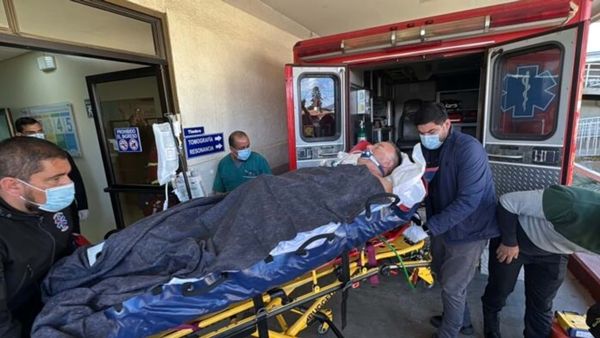
This is the third in a four-part series looking at facets of the pandemic. Read part one here and part two here.
It’s difficult to stomach the idea that the pandemic is almost over while dozens of Australians are still dying from the disease every week. While there’s been a steep drop in COVID-related deaths since all-time highs at the start of the year, the deadly disease is still circulating.
For the elderly and the immunocompromised, it’s a fact never far from their minds.
Experts and advocates are calling for caution around treating COVID-19 “like the flu”, arguing complacency will take the lives of the at-risk and questioning how such a deadly disease could be downplayed.
Over? The data says otherwise
The government has stopped releasing daily COVID-19 data, opting instead for a weekly report with a vague graph on death rates instead of definitive numbers. The World Health Organization is doing the health department’s job for them, recording 171 deaths so far this week on its dashboard. Last week, 261 people died from the virus.
In August there were nearly half a million confirmed and probable cases of COVID-19 with most cases found in people aged 90 and over.
Forty aged care residents died between September 7-14, according to the latest figures available, making a cumulative total of 3981. During this timeframe, there were 1248 active COVID-19 cases across 270 facilities.
Associate principal research fellow at the Burnet Institute Professor Mike Toole said it was too early to think about the end of the pandemic.
“Putting your head in the sand and saying it’s over is way too premature. We’ve just come out of the most deadly wave of COVID we’ve ever had in July and August,” he said.
“There’s a trough; there have always been troughs [in case numbers].”
‘Insulting’ to the elderly and immunocompromised
Australia’s booster vaccination program has slowed. While 71.8% of the eligible population has had three doses, this drops to just 56% when taking into account the whole population. For Peru, Italy and Germany this number sits above 70%. There are fewer than five million Australians who have had their fourth.
“We still have a very vulnerable community and we keep sending the wrong signals, reducing even the simplest of mandates like wearing masks and public transport,” Toole said. The mask mandate on public transport has now been lifted in Victoria, following the lead of South Australia and NSW.
Toole said comparing COVID-19 to the flu was dangerous. There’s been a reduction in global life expectancy, and in Australia there were 17% more deaths reported this year to the end of May by the Australian Bureau of Statistics than the five-year average.
“It’s insulting to the elderly and other vulnerable people in our community — we just really don’t care,” he said.
What is ‘COVID-19 normal’?
People with disabilities have been disproportionately affected by the pandemic. One in four adults with a disability experienced worsening physical health in the first 14 months of the pandemic, and as of December 2020, 32% said they felt “overwhelmed” because of COVID-19.
Disability advocate Sam Connor told Crikey complacency was a huge concern, pointing to the removal of mask mandates on domestic and international flights and public transport, and the lack of indoor ventilation systems.
“It’s just terrifying,” she said.
“Nobody’s going to go back to pre-COVID normal.”
She believes failures of the government to protect people with disabilities could result in a massive class action lawsuit: “It’s for failing to keep us safe, for failing to make it safe to go to school and to work.”
Are you still cautious about COVID-19 or now considering it a minor threat? Let us know your thoughts by writing to letters@crikey.com.au. Please include your full name to be considered for publication. We reserve the right to edit for length and clarity.







